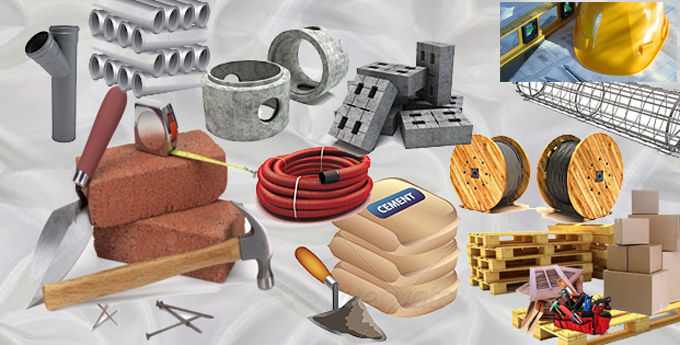
What are the most important construction materials for a building
Stone, bricks and concrete are considered as the vital materials for building a structure. Each material contains its individual characteristic that differentiates a material with other materials. There are benefits and drawbacks of each of these materials. Therefore, the best option for a material is to balance all the characteristics like strength, elemental damage resistance, stability, accessibility, durability, costs, safety, and finally, the user-friendliness.
Stone stands for the most fundamental natural building materials. Stones are extensively used all over the world for developing homes to suit local weather conditions. Usually, stones are utilized as fundamental structural materials in buildings. A building constructed with stone, can sustain for a long period. Stones also last for a long time. The stone becomes unaffected with corrosion, rust and flame. Stone is a very condensed material that can provide extreme protection to your building.
There are also some disadvantages for stone. It?s weight is massive with regards to brick and concrete. So, huge transportation cost is required to deliver it to the construction jobsite. Beside, huge time is required to develop the structures with stones.
Bricks are generally built with clay. A mould is used to develop blocks of clay bricks by forming clay via a moulding device and then cutting them with exact size. These heat-hardened bricks contain good resistance power to flame and moisture as compared to concrete. As bricks reduce the flammability of fire, it can easily withstand heat damage from fires to protect a building. With the strong moist-resistant capacity, bricks prevent water particles from lowering the brick strength because the water from any source like the rain, rupture the solid-bonds of the brick .This can result in increasing the durability of the building. Besides, bricks have extreme resistant capacity against compressive force which is useful for building skyscrapers. Bricks can be set up easily in regular shapes, mainly the shapes of polygons.
The concrete is developed by mixing water with a special cement and a grinded rocks. Concrete becomes compacted and solidified once it blended with water and placed because of a chemical process called hydration. There occurs a reaction between water and the cement, which joins the other components collectively and soon produce a stone-like material with greater strength.
Concrete has comparatively short time-consumption affair. Concrete is built into various shapes because of its fluidity prior to solidify. Therefore, it is useful for designing complicated shapes of buildings. Concrete contains a relatively low tensile strength, steel rods or bars are used to increase its strength. Concrete is treated as less strong and short-lived as compared to brick and stone buildings. Concrete contains comparatively greater compressive strength, in which it can resist strong compressive force.
Besides, there is a very low coefficient of thermal expansion for which concretes does not have a good stretching force because of thermal expansion on a hot day. Therefore, concrete expands outside limit and it gets cracked easily. Concrete is dependent on long-duration forces and it is susceptible to creep. So, there is a possibility that a building can?t be stable and safe for additional protection with regard to stone and bricks.
To read the complete article, go through the following link theconstructor.org


